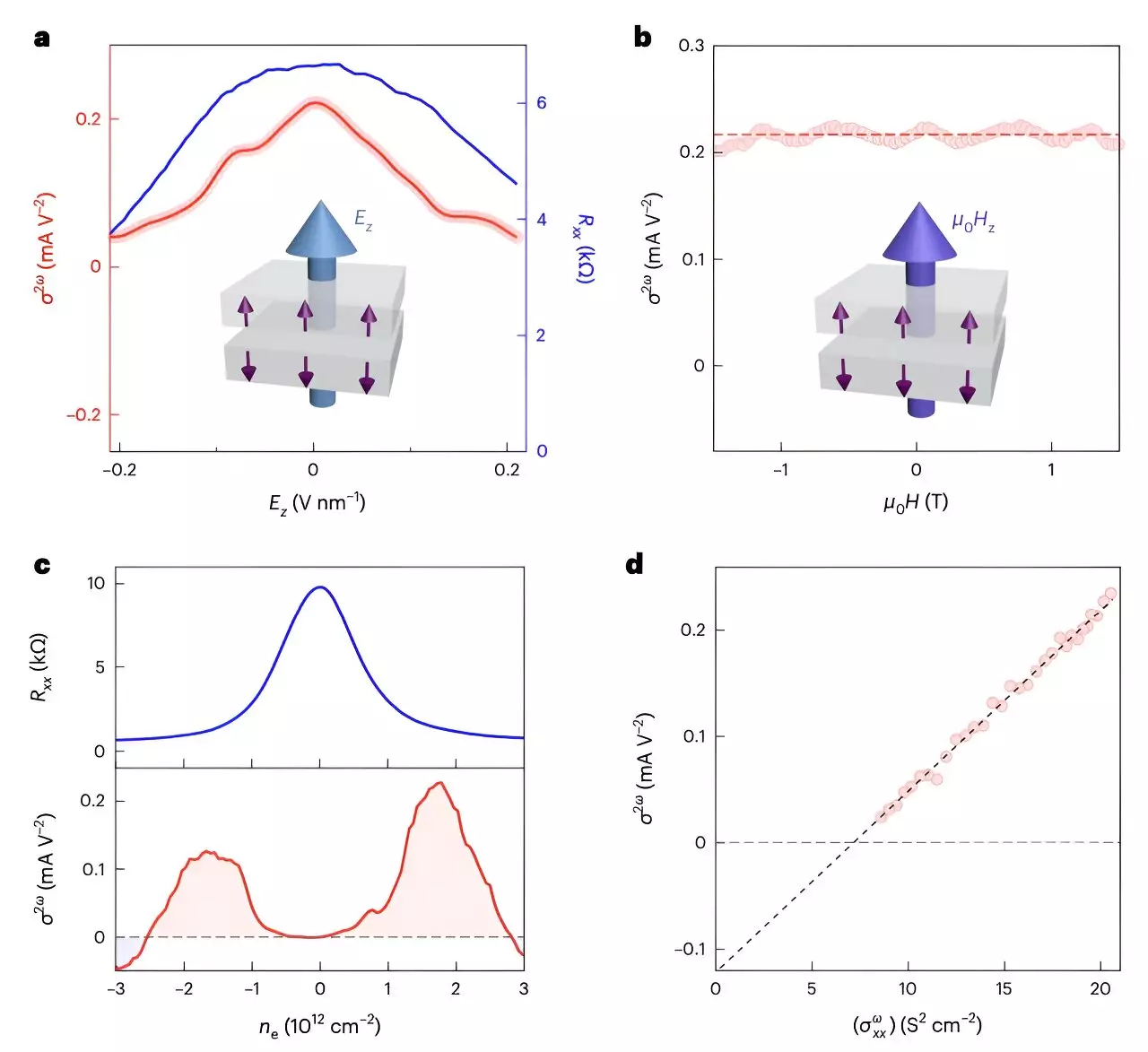Antiferromagnetic materials are a special class of substances where the magnetic moments of atoms arrange themselves in an opposing manner, leading to a state of zero net magnetism at the macroscopic level. This intriguing characteristic has captured the interest of scientists, particularly in the realm of spintronics—an innovative field harnessing the spin of electrons for technology advancements. At the forefront of this research surge, a team from Harvard University has made notable strides by observing an unexpected phenomenon known as the antiferromagnetic diode effect within the even-layered MnBi2Te4.
At its core, the diode effect is defined by the ability of a material to allow the flow of electrical current predominantly in one direction. This property is vital in numerous electronic applications including radio receivers, digital circuits, and temperature sensors. Traditionally, this behavior is linked to materials that exhibit directional charge separation. However, the Harvard research team has revealed that similar effects can occur in materials characterized by a centrosymmetric crystal structure—a significant deviation from conventional wisdom.
The Harvard group’s study, published in the journal *Nature Electronics*, marks a pivotal step in exploring how these antiferromagnetic materials can be systematically utilized in electronic applications. This discovery raises questions about the prevalent understanding of charge transport in non-centrosymmetric and centrosymmetric materials, thereby opening up new inquiries into their functional applications.
MnBi2Te4, the focus of this groundbreaking study, is a topological insulator that belongs to a family of antiferromagnetic compounds known for their unique electronic properties. The research team approached this complex material through meticulous experimentation, fabricating devices with distinctive electrode arrangements. These included traditional Hall bar electrodes for standard measurements and a novel radially distributed electrode design aimed at enhancing detection capabilities.
Through this dual approach, they successfully demonstrated the antiferromagnetic diode effect, observing nonlinear current transport characteristics in both configurations. This dual validation underscores the robustness of their findings and offers a compelling insight into the versatility of MnBi2Te4 for future applications.
The researchers employed a combination of advanced techniques to delve deeper into the properties of MnBi2Te4. This included spatially resolved optical methods alongside electrical sum-frequency generation (SFG) measurements to catalog the nuanced electronic behaviors arising from the material’s intrinsic properties. The combination of these methodologies not only corroborated their observations but also provided a detailed analysis of nonlinear responses indicative of the antiferromagnetic diode effect.
The detailed methodology established a framework for potential further exploration, propelling the conversation surrounding antiferromagnetic materials into new territories of research.
The ramifications of discovering the antiferromagnetic diode effect in a centrosymmetric crystal cannot be understated. The research team asserts that such behavior could have profound implications for developing advanced electronic circuits, specifically in the realm of antiferromagnetic logic circuits and microwave energy harvesting devices. This opens up avenues for integrating these materials into practical applications addressing energy efficiency and performance improvement.
By highlighting the potential of utilizing the antiferromagnetic diode effect, the team sets the stage for further investigations geared towards the development of high-performing spintronic devices. The implications of this work voice a promising future—one where the integration of antiferromagnetic materials in technology paves the way for breakthroughs in computational devices and energy-efficient systems.
As researchers continue to probe the intricate behaviors of antiferromagnetic materials like MnBi2Te4, the insights gained are sure to foster a richer understanding of their capabilities. This research heralds a new direction for electronics and spintronics, catalyzing innovations that blend the realms of magnetism and electronics. With the potential to revolutionize how devices are conceptualized and constructed, the future of antiferromagnetic materials is ripe with possibilities waiting to be explored.

